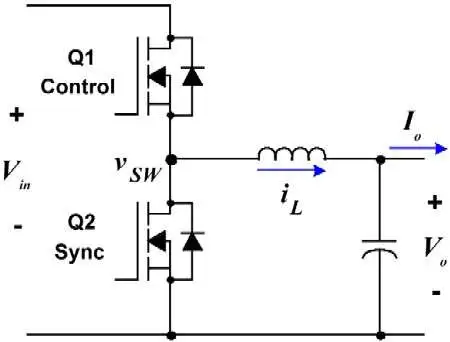I want to make a buck converter with bidirectional GaN FETs, so each switch is made up of two back-to-back GaNs:
The problem that I encountered is that if I have a deadtime (DT) higher than 0 ns between the two switches, I end up having huge spikes of voltage at Vsw (in the order of kV) but the expected output looks fine. If the dead time is 0 then the waveforms look as they should.
Also, if I build the same circuit but instead of having bidirectional switches, I use normal switches, I have no problem at Vsw, no matter the duration of DT.
I don't understand why I have this behavior in simulation and how I can overcome it.

